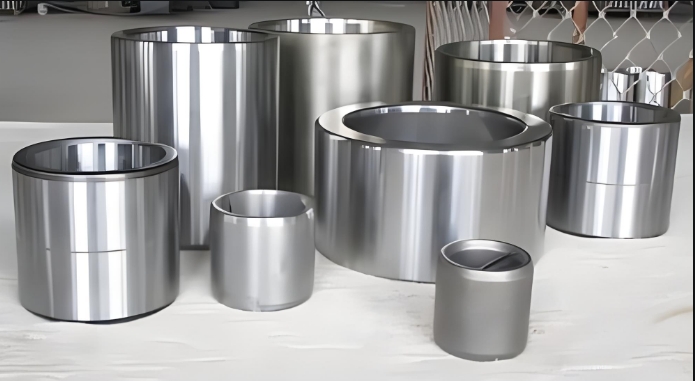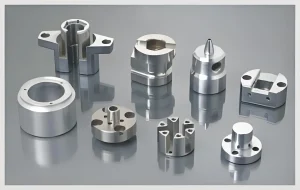Introduction:
Stainless steel machining is a critical process in many industries, from aerospace to medical devices. Its high strength, durability, and resistance to corrosion make it a popular material for precision parts. However, machining stainless steel can present unique challenges, requiring the right tools, techniques, and knowledge. In this article, we will explore the six key knowledge points that every machinist needs to master when working with stainless steel.

1. Understanding the Types of Stainless Steel
Stainless steel comes in various grades, each with its own properties. The most commonly used types in machining are:
- Austenitic Stainless Steel (e.g., 304, 316): Known for its excellent corrosion resistance and ease of machining. However, it can work-harden during machining, making it harder to cut.
- Ferritic Stainless Steel (e.g., 430): Less ductile but highly resistant to corrosion and heat. It’s easier to machine but tends to have lower toughness compared to austenitic grades.
- Martensitic Stainless Steel (e.g., 410, 420): Stronger but less resistant to corrosion. It can be hardened by heat treatment but may be more difficult to machine.
- Duplex Stainless Steel: A combination of austenitic and ferritic steels, offering a balance of strength and corrosion resistance, but it can be challenging to machine due to its unique structure.
Understanding the differences in stainless steel types will help you choose the right material for your project and avoid unnecessary wear on cutting tools.
2. The Importance of Tool Selection
The right tools are crucial for efficient and precise stainless steel machining. Factors to consider include:
- Cutter Material: Carbide tools are typically the best choice for machining stainless steel due to their hardness and resistance to heat. High-speed steel (HSS) can also be used but may wear out faster.
- Tool Geometry: Tools with a positive rake angle reduce cutting forces and improve surface finish. A sharp cutting edge is crucial to avoid work-hardening the material.
- Coatings: Coated tools, such as those with TiN (Titanium Nitride) or TiAlN (Titanium Aluminum Nitride), help extend tool life by reducing friction and heat generation during machining.
Selecting the right tool material, geometry, and coatings ensures more efficient machining and reduces tool wear.
3. Managing Heat and Work-Hardening
Stainless steel has a tendency to work-harden, meaning it can become harder as it is machined, making it more difficult to cut. Work-hardening can cause premature tool wear and poor surface finishes if not controlled. To mitigate this, follow these practices:
- Proper Cutting Speed and Feed Rates: Machining stainless steel at the correct speeds and feeds helps control heat generation and reduces the risk of work-hardening. Generally, slower cutting speeds are recommended compared to other metals.
- Flood Coolant: Using a high-pressure coolant system helps dissipate heat and improves tool life. It also helps flush chips away from the cutting area to prevent them from re-entering the cut.
- Light and Consistent Cuts: Taking lighter cuts with consistent feed rates prevents excessive heat build-up and reduces the chances of work-hardening.
4. Optimizing Cutting Fluids
The use of cutting fluids or coolants is essential for efficient stainless steel machining. Cutting fluids help reduce friction, control temperatures, and improve surface finishes. Key points to consider include:
- Type of Cutting Fluid: Water-soluble coolants are often the best choice for stainless steel machining, as they provide excellent cooling properties. However, oil-based fluids can be used for more demanding applications where greater lubrication is needed.
- Fluid Pressure: Increasing the pressure of the coolant helps ensure it reaches the cutting edge and removes heat more effectively.
- Fluid Maintenance: Regularly maintain and replace cutting fluids to ensure they remain effective and free from contaminants.
Using the right cutting fluids ensures the longevity of your tools and enhances the precision of your machining operations.
5. Surface Finish Considerations
Achieving a high-quality surface finish is one of the most important goals when machining stainless steel. The surface finish impacts both the aesthetics and performance of the part. Factors that affect surface finish include:
- Tool Condition: Dull or worn tools produce poor finishes. Keeping tools sharp is essential to achieving a smooth, uniform surface.
- Cutting Parameters: Proper speeds, feeds, and depths of cut can drastically impact the surface finish. Fine cuts with low feed rates typically provide the best results.
- Post-Machining Processes: Processes like grinding or polishing may be required to achieve an even higher-quality surface finish, especially in industries like medical devices and aerospace.
6. Avoiding Common Machining Issues
When machining stainless steel, certain issues can arise that can disrupt the manufacturing process. These include:
- Built-Up Edge (BUE): A common problem in stainless steel machining where material sticks to the tool’s cutting edge, causing poor surface finishes and inconsistent cuts. To prevent BUE, increase cutting speed and ensure proper coolant application.
- Chip Control: Stainless steel chips can be long, stringy, and difficult to manage. Proper chip-breaking tools and coolant application can help manage chip formation and prevent them from interfering with the cut.
- Vibration and Tool Deflection: Stainless steel machining can produce significant vibrations, especially at higher speeds. To reduce vibrations, use tools with better rigidity, ensure proper toolholder setup, and optimize machine conditions.
Conclusion:
Mastering stainless steel machining requires knowledge of material properties, tool selection, cutting techniques, and best practices. By understanding the six essential points outlined in this article, machinists can improve efficiency, reduce tool wear, and produce high-quality parts that meet the stringent demands of industries requiring stainless steel components.
Whether you’re a novice or an experienced machinist, implementing these techniques will ensure that your stainless steel machining processes are optimized for the best possible results.






